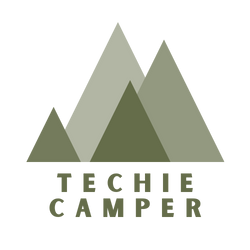Camping in the wilderness can be a great experience, but if you don’t know how to find firewood when camping then it could become an unpleasant one. There are many ways of doing so, and all you need is a little preparation before heading out into the woods.
We’ll explain how to find dry wood. But first, we’ll cover some important topics including checking the local regulations on gathering and splitting firewood at the campsite, where you can look for dead or downed trees that have already fallen, what types of firewood burns best (softwoods burn faster than hardwoods), buying firewood from grocery stores or gas stations, and finally your options for bringing some with you.
Know the Rules
Campfires are the perfect way to enjoy a night under the stars, but they can get you in trouble if done incorrectly. Check local regulations before gathering firewood and check with land managers whether campfires are allowed where you will be camping!
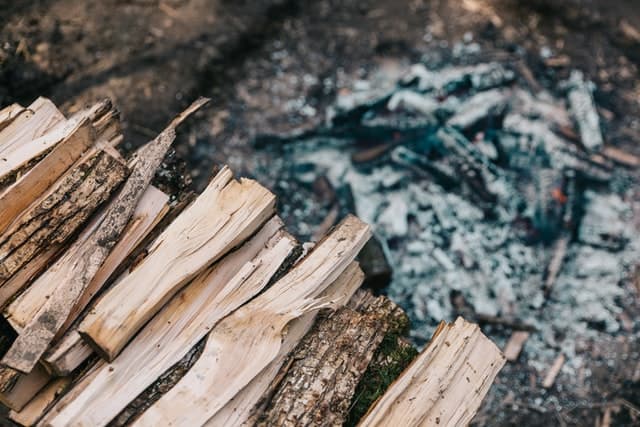
Depending on which campsite you plan to visit, you’ll want to check ahead on the local regulations and laws governing whether you are allowed to gather firewood at all. If you are not allowed, then you’ll have to buy your firewood beforehand, usually at a gas station or grocery store.
Finding the Right Type of Firewood Around Your Campsite
So you’ve done the research and it’s perfectly fine to use the natural, dead wood around the campsite as your firewood. Now how do you know which type of wood is the best to use for a campfire?
The most important thing to remember is that not all firewood burns equally. Some types, like pine or cedar are much more likely to produce sparks and smoke than other types, such as oak or hickory.
If you can’t spot the difference, just try a few logs at a time until you find the right burning logs.
Dead Wood for Firewood
Gathering firewood responsibly requires you never to strip live trees. It’s bad for the environment, and it can’t be sustainable! Imagine if every camper in that area – dozens or even hundreds during a season – pulled their firewood from the tree closest to their campsite. But, not only is stripping green wood less likely to burn well; surely we all know this sounds selfish as hell?
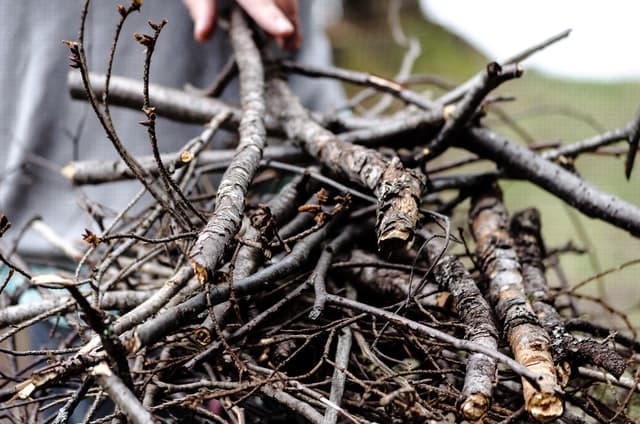
If the wood snaps easily and feels “dry,” it will probably burn well too. If the wood feels wet or lively, then leave it alone.
Look for Hard Woods
Using the right type of wood can make a big difference in how your fireplace burns. Hardwoods are ideal, as they burn hotter and slower than softwood types such as pine or fir trees. If you use these tree species for burning purposes, be aware that tar buildup may cause fires to start up again inside your chimney if it’s not properly cleaned out by professionals regularly! When using hardwoods like oak or maple with high-density fibers in them, less smoke is produced because those woods produce more heat and don’t contain much sap compared to other varieties which will create an unpleasant smell when burned too often – this should help keep any soot from accumulating on walls near where the fire is located.
Hardwoods are heavier to carry in bulk, which is one reason most campers opt for some combination of hard and soft woods. Soft wood supplements can be found locally by doing a little scouting around your campsite – dead branches on the ground waiting to be snapped up with few tears. Dry leaves make excellent kindling too (or at least they did before this year’s hurricane season).
Use dry twigs as vines to start an initial flame and then add bigger pieces gradually until you have a roaring fire going strong enough for whatever cooking you’re planning to do.
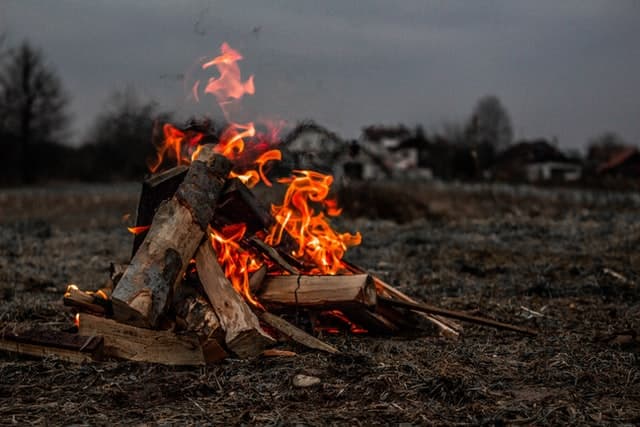
Seasoned Firewood
A great way to ensure that you are getting the best value for your firewood is by making sure it’s been well seasoned. If a log has been properly dried, then you will see radial cracks in the wood and any bark should come off easily when handled with care.
A piece of dry timber can be twice as valuable than one which hasn’t had time to season yet – but how do we know if our logs have aged long enough? Well look out for these signs: radial cracking on surfaces where there was once green or fresh woods, easy removal of any remaining traces of bark from around edges (a sign that water content levels were kept low), and no evidence whatsoever of rot or decay.
Common Areas to Look for Firewood
Perhaps the most essential rule of gathering firewood responsibly is never to strip live trees. It’s bad for the environment, and it’s not sustainable. Imagine if every camper to that area — dozens, even hundreds throughout a season — pulled their firewood from the trees closest to their campsite. But, even from a selfish perspective, fresh, green wood is not going to burn well. Repeat after me: “Deader is better.” If it snaps easily under your boot, it’s ready to burn.
Starting a Fire with the Cone Method
When it’s time to start the fire, place a small cone of kindling around some tinder in your designated area. Add more as needed when you feel like things are heating up or if there is not enough warmth from the flames at all. As you add wood and maintain an open flame, wait until they have become hot before adding larger logs!
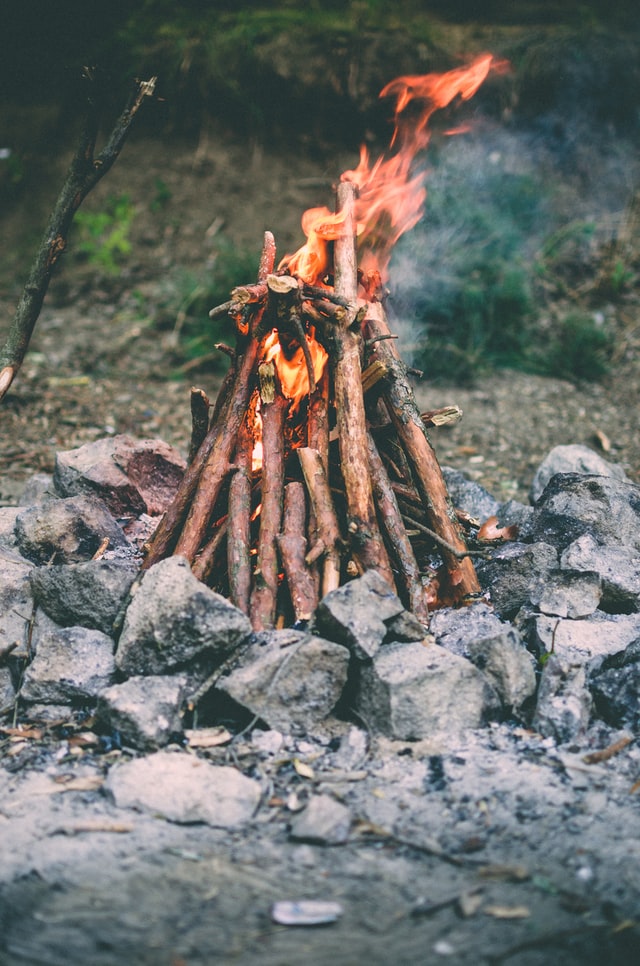
Starting a Fire with the Reverse Pyramid Method
Build your fire to last with the following steps! First, start by laying down three or four logs of equal size on the bottom layer. Next turn them 90 degrees and add a second layer containing slightly smaller logs that are also turned at an angle. Continue alternating layers in this manner as you go, getting progressively smaller until you reach tinder and kindling which should be placed on top for easy lighting!
Leave Your Leftover Firewood For the Next Campers
If you are camping in a national or state park, make sure to take your firewood with you when it’s time for bed. If not, the best thing to do is burn what wood remains and give any leftover pieces of wood that won’t fit into someone else’s baggie before leaving. Remember though: safely extinguishing fires without hurting yourself is just as important! Check out our tips for putting them out properly so that everyone can enjoy their next campfire outing pain free.
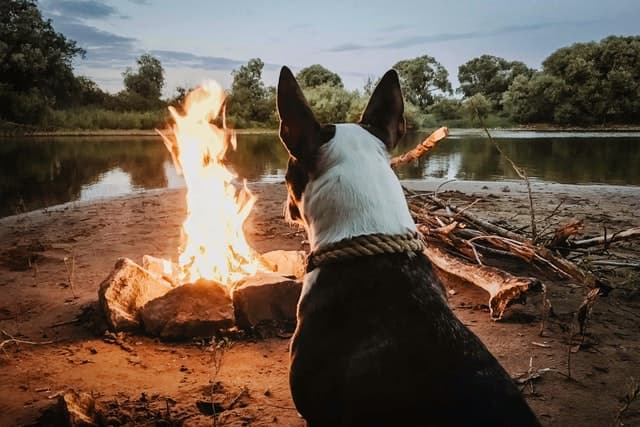
When you’re out in the woods, pack any trash that is found. Crush up charcoal pieces from your fire and scatter them throughout a broad area. You may also want to dismantle anything built on site so not to attract animals or for safety reasons while setting camp elsewhere along with packing all of your belongings away if possible during this time period
